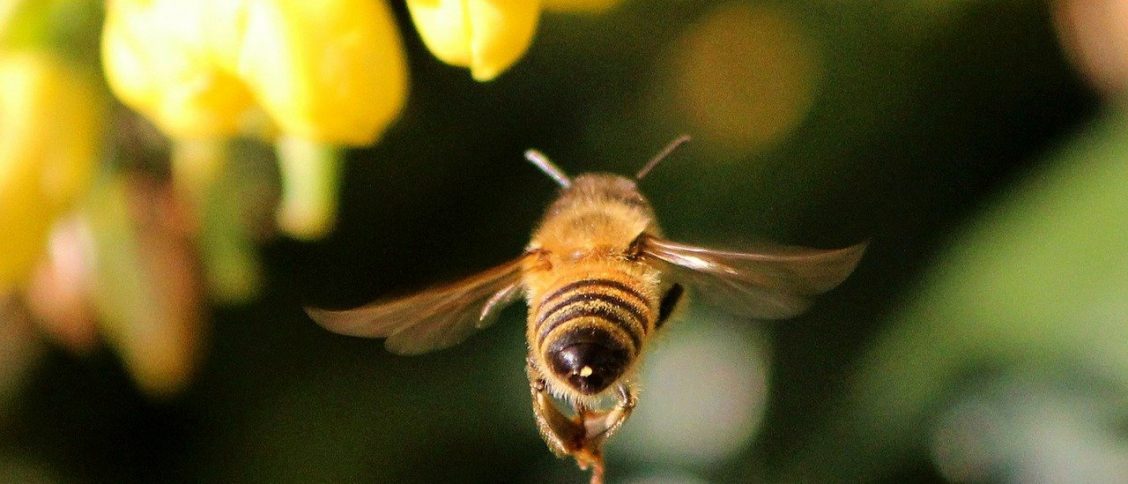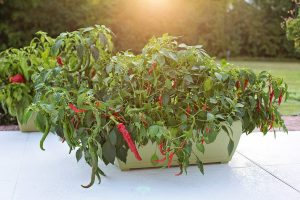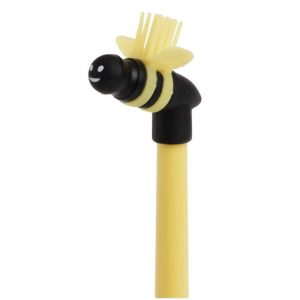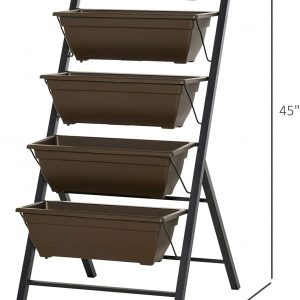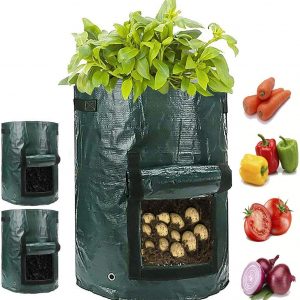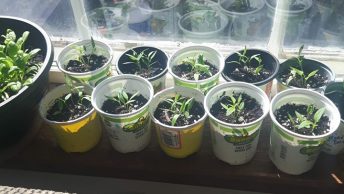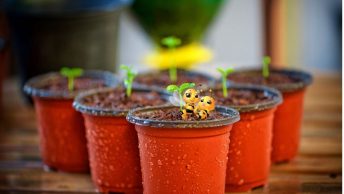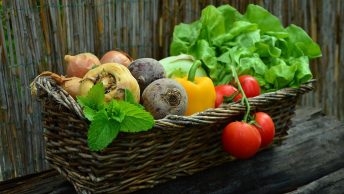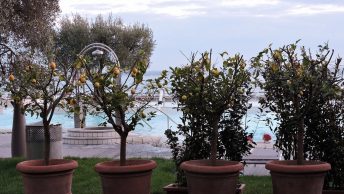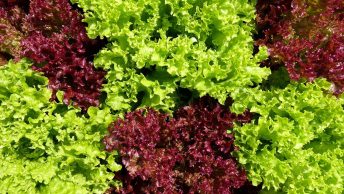How to attract bees to your container garden this year including which plants you need to have for best results. I have compiled a list for easy reference when planning your garden this year. Some plants you may want to include will not only be beneficial to the bees but add a beautiful contrast to any garden when planned right.
Some of your garden vegetables will attract them but if you want a good harvest all summer long, You need bees for some plants! If you are scared of bees I have some great tips at the end of the post to help you understand them and possibly help you get over your fear of them! Because I too use to be scared of a bee, and now I can even hold one in my hand. I can actually say I love bees and all they do for us!

Table of Contents
Bee Friendly Plants For Your Container Garden
| Flowers that Attract Bees | Herbs and Vegetables |
|---|---|
| Anise Hyssop | Basil |
| Bergamot | Chives |
| Borage | Cucumbers |
| Buckwheat Flower | Catnip |
| Calendula | Cilantro |
| Cardoon (lots of bees) | Dill |
| Celosia | Fennel |
| Cosmos | Lavender |
| Foxgloves | Lemon Balm |
| Echinacea | Mint Plants |
| Marigolds | Oregano |
| Purple Tansy | Rosemary |
| Sunflower | Sage |
| Wild Flowers and Pansies | Stevia |
| Zinnia | Thyme |
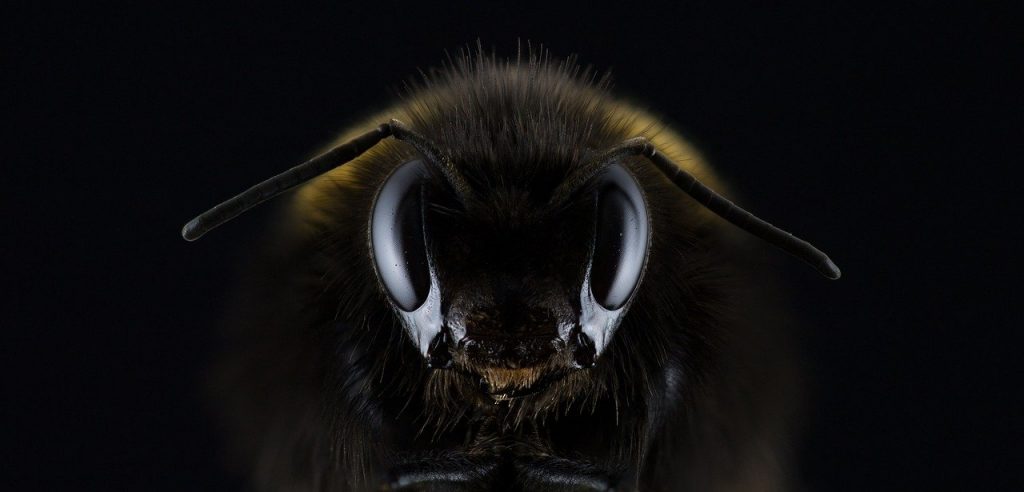
Attract Bees For Pollination
So why do we want to attract bees? They are essential to our gardens. Without them, we would not see them bloom over and over. Although some plants are self pollinating and still will attract some bees like:
- Tomatoes
- Green Peppers
- Chilli Peppers or hot peppers
- Eggplants
- Green beans
- Sweet peas
- Peanuts
Pollen is required for a flower to produce actual fruit. We sometimes refer them to as “perfect” or “complete” flowers. Each individual flower contains both a male (aka anthers) and a female part (aka stigma) of the flowers. Pollen must pass from one part to another for successful pollination to occur. There are some exceptions like pumpkins and squash for instance they are neither complete nor perfect flowers. Since the plant has two different flowers for the anthers and stigma.
Tips for Self Pollinating Your Plants
TIP: If your eggplants or other self-pollinating plants do not flower, you can mix a solution of 1 Tablespoon of Epson Salt to one gallon of water. Feed them this next time you water. It can stimulate flower growth. A great tool to self pollinate your plants I can recommend the one below. It is easy to use and you can make your peppers and tomatoes reach their maximum yield.
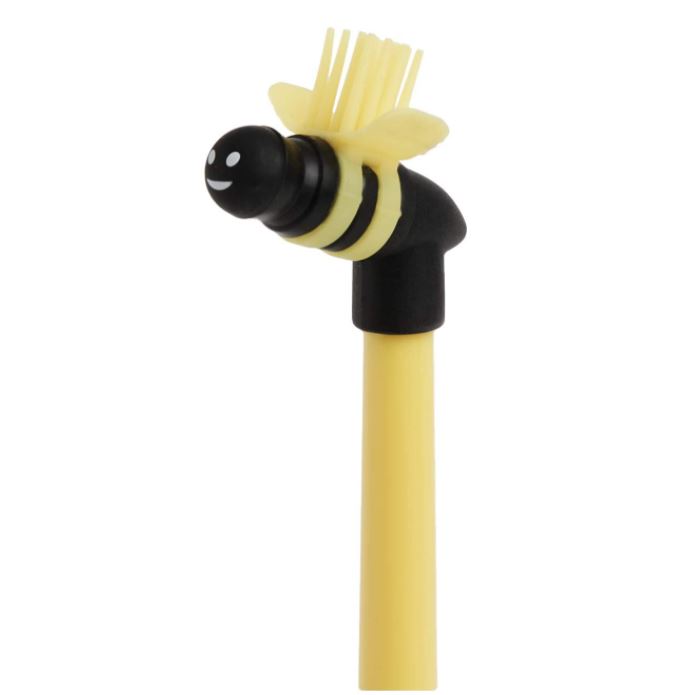
AeroGarden Be the Bee Pollinator
Disclosure: I only recommend products I would use myself and all opinions expressed here are our own. This post may contain affiliate links that at no additional cost to you, I may earn a small commission
How to Pollinate Your Plants Yourself
Bees can make things pretty easy for us. So using the tool above you can pollinate your plants yourself. Most self-pollinating plants only require a shake to drop down the pollen into the other stigmas. You can also gently swab the one flower that is the anther and putting the pollen directly onto the stigma. This is great for pumpkins and squash, but you need to identify which parts are the male vs female on the plants.
Tips to overcome your fear of bees
Bees are important factors in our ecosystem. So maybe after you read this section you may just have a little less fear of them. Understanding why they sting is a huge part of not having any fear.
Why do bees bite or sting?
Believe it or not, bees rarely sting. And not all bees have stingers. Smaller honeybees have stingers, they are attached to their abdomens which they use to defend themselves within the hive. Very rarely bees mistake you like flowers, but it can happen. A bee will only sting if it feels threatened, stepped on, or confused.
What happens when a bee stings you?
If a bee feels threatened, it will sting you and release a pheromone that attracts other bees to come help protect their home. The stinger itself is like a fish hook and will need to be pulled out. It can also keep injecting venom into you for up to 10 minutes. So get the stinger out right away. the venom is the thing that actually causes the pain from a sting. Bees will die after they sting you because it is the body part they are losing.
How can I avoid getting stung in my garden?
To avoid getting stung, watch out for them and do not disturb them or swat at them. Wear shoes when you’re outdoors in your garden. Don’t wear heavy perfumes or cologne. Cover any sugary drinks and seal all your trash cans. Stay clear of any hives and have a professional come and relocate them. Please do not kill our precious bees.
Real Science! Try the cheese puff pollination at home with your kids!
To get started you will need the following materials:
- Paper Towels
- Scissors
- A big large bowl
- Cheese Curls (the cheesier the better)
- Fun-sized candy bars, like starburst wrapped in individual packaging.
- Get your kids together and have some fun with this really cool experiment from the Children’s Museum Website.
Busy Bee thinks you may like these too!
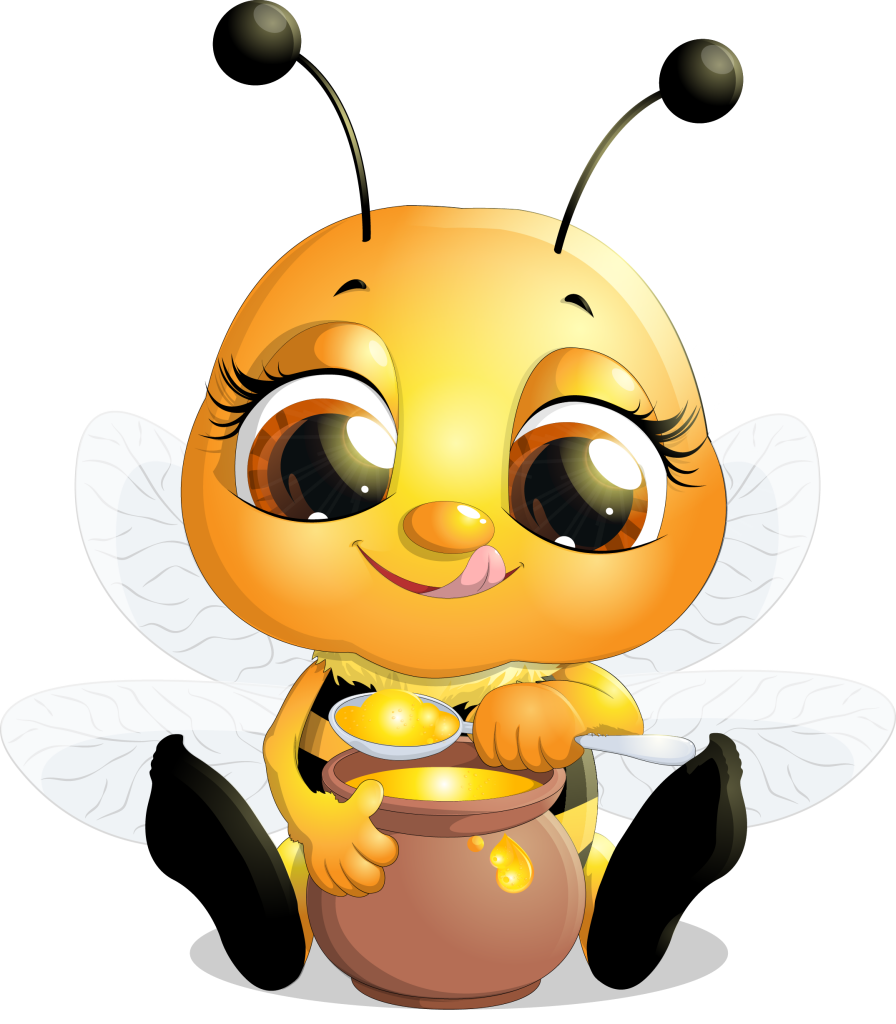
Don’t Forget To Leave A Comment
If you have any questions or want to leave some pollinating tips or things about bees I haven’t mentioned. Or if you just simply loved the post on How to Attract Bees to Your Container Garden I would love to hear from you in the comment section below! I may just add it to our post! I am always looking for new tips to share with our viewers!


